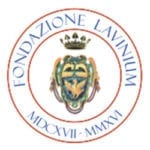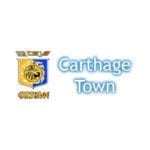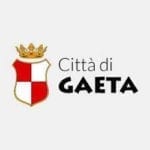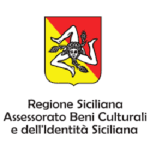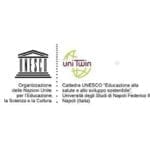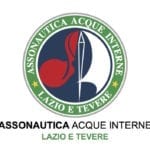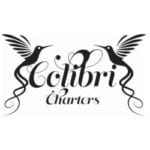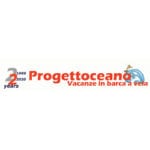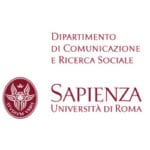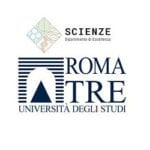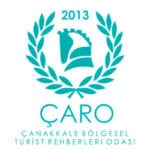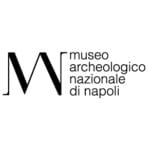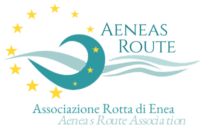Statute
Statute
ARTICLES OF ASSOCIATION OF THE
“ROTTA DI ENEA” ASSOCIATION
TITLE 1
INCORPORATION AND PURPOSES
ARTICLE 1. – INCORPORATION – REGISTERED OFFICE – DURATION
The Association “ROTTA DI ENEA” is incorporated, operating nationally and worldwide. It is requested to add for every association notice the locution “Ente del Terzo Settore” or “ETS” (it stands for “Third Sector Board”) to the present denomination.
The Association has its registered office in Rome (RM), Via San Francesco di Sales no. 90, and may open offices, delegations or representative offices in Italy and abroad.
The duration of the Association is set until 31 December 2050. The Associates’ Meeting may resolve to extend or anticipate the duration of the Association.
ARTICLE 2. – PURPOSE OF THE ASSOCIATION
The main purpose of the Association, excluding all objectives pursued for financial gain, and with full political autonomy, is to promote the Proposal of the Project “la Rotta di Enea” (Aeneas’s Route) as a Cultural Itinerary for the member countries of the Council of Europe and the Mediterranean area and its subsequent management, to be submitted to the Council of Europe and to the competent Bodies for its evaluation. The Association also aims to promote and divulge the artistic cultural heritage linked to Aeneas as a central figure of the shared European roots and of the Euro-Mediterranean brotherhood and the experience of the journey narrated in Virgil’s Aeneid, as the source of a blend and intersection of diverse cultures that fosters new, superior values, civilisations and institutions.
To this end, the Association may:
– promote and develop the cultural, artistic, historical-archaeological and natural heritage associated with the places, sites, parks and archaeological areas covered by the aforesaid Cultural Itinerary, managing all the services related to the safe-keeping, maintenance, use, conservation, recovery, and restoration of this heritage, also jointly, or through integration, with other parties;
– perform and manage, or collaborate with the relative multi-purpose businesses and Museums, in the same activities, in every single aspect, every site, area, archaeological park or other park, as well as in other forms of museum and cultural development;
– take schools, groups and families on guided tours, also organising games and educational activities or themed workshops;
– organise courses, study conventions, scholarships, event awards and artistic productions and anything else that may promote and stimulate the study, dissemination and awareness of the aforesaid heritage both in Italy and abroad, also with the possibility of staging archaeological digs, restoration courses, exhibitions and exhibition initiatives, both for experts in the field and for students;
– operate, also in groups, to develop themes of cultural development and excellent artistic teaching experiences, also aimed at psychologically and/or physically and/or socially disadvantaged parties;
– implement internationally, nationally, on a regional, provincial and metropolitan scale, programs of cultural, tourism-related and scientific education aimed at schools, universities and the general public;
– produce and sell tangible and intangible products made by the Association or by third parties to members and to third parties, with a view to performing the activities listed above.
To fulfil its purpose, the Association proposes to organise fund-raising events, meetings, social and cultural activities and artistic productions.
The Association may also publish magazines, books, websites, and broadcast radio and TV programmes with a view to disseminating news about its activity to the public, as well as the contents of research, studies, polls, conventions, seminars, and any other initiatives that may be organised, promoted, or funded for the fulfilment of the Association’s purposes, all within the limits and with the authorisations required by the law in force.
Always for the purposes specified above, the Association can manage or have others manage food serving and restaurant activities and other commercial activities, for its own members or users/participants in the promoted initiatives, in the places in which its premises are located. It may also perform these activities on a temporary or occasional basis, provided that they are complementary or subsidiary to the cultural and entertainment activities which are its main purpose. The proceeds from the instrumental activities will
be stated in the financial reports in a specific separated section.
The operations of the Association are inspired by the principles of transparency, democracy, and it shall remain autonomous and independent from all other cultural organisations.
In order to achieve its purpose, the Association may carry out all and any collateral and instrumental financial, banking, commercial and property and securities-related activities, as well as:
– coordinate, promote and develop the activity of organisations with a purpose that is similar or in any case related to its own, providing the same with all kinds of technical, cultural and economic assistance.
– collaborate with public and/or private organisations and participate in national and international bodies and organisations of all kinds, with a view to fulfilling the objectives detailed in the Articles of Association and receiving contributions and subsidies from them.
In case of dissolution of the Association for any reason, the assets of the same must be devolved to another association or foundation with similar objectives.
It is strictly prohibited to distribute, both directly and indirectly, the profits or residual management amounts, and the funds, reserves or capital during the life term of the Association, unless the assignment or distribution of the same has been imposed by the law.
TITLE II
MEMBERS, ADMISSION AND WITHDRAWAL, RIGHTS AND DUTIES
ARTICLE 3. – REQUISITES OF MEMBERS
All those who identify with the founding values of the Association and state their willingness to comply with its operating rules can be admitted to the Association.
The members of the Association are the founding associates, all natural people, clubs and organisations: that: share the same objectives; whose activities do not come into conflict with those of the cultural Association; undertake to contribute to the fulfilment of the Association’s purposes, accepting its objectives and method, its founding values; state their willingness to comply with the Association’s operating regulations.
The members are classified as:
– Founding Associates: that is, those who have intervened in the deed of incorporation of the Association and those who are admitted with said classification by the Founding Associates, through a resolution passed with a majority vote;
the Founding Associates nominate by way of a majority vote, the Executive Committee and its Chairperson, who are then appointed by the Associates’ Meeting.
The Founding Associates have the right to participate in the Associates’ Meeting.
– Ordinary Associates: those who regularly pay the membership fee, and so contribute to the achievement of the Association’s institutional purposes;
the Ordinary Associates have the right to participate in the Associates’ Meeting.
The Management Committee may resolve to admit the participation of the following types of members:
– Honorary members: those appointed as such based on their motivated nomination by the Executive Committee, for having provided particularly noteworthy support, including economic support, to the activity of the Association, also as representatives of public or private Organisations;
– Supporting Members:those who contribute to the fulfilment of the purposes of the Association by providing economic support.
The Honorary Members and Supporting Members do not have the right to vote and may participate in the Associates’ Meeting if called upon to do so.
All categories of associates are entitled to participate in the day-to-day activities of the Association and to intervene in the meetings with voting rights and to examine the association records. The Association also guarantees the uniformity of it relationships with associates and of the method of joining the same.
The aspiring Associate must agree with the Association’s operating principles and with those applied by the Association when planning and performing its activities.
ARTICLE 4. – ADMISSION OF ASSOCIATES
Requests for admission as Associate and Member must be addressed to the Chairperson of the Executive Committee. The latter shall add the examination of the received admission requests to the agenda of the first useful Executive Committee meeting. The Executive Committee shall verify the presence of the requisites specified in Article 3 herein, the absence of conflicts between the interests and purposes of the aspiring associate and those of the Association, and subsequently, with the fullest margin of appreciation and independent judgement, it shall irrevocably resolve to reject or confirm the request. In the latter case, it shall also simultaneously arrange for the associate to be registered in the Register of Associates.
ARTICLE 5. – ASSOCIATES’ DUTIES
The request for admission to the Association requires the aspiring associate to accept all the relative legal provisions in force, and those of these Articles of Association and, upon registration, to pay the annual membership fee, as determined by the administrative body.
ARTICLE 6. – ASSOCIATE’S NON-FULFILMENT
Any Associate or Member who does not fulfil the membership duties and/or fails to comply with the resolutions passed by the competent Association bodies, may be expelled from the Association, at the discretion of the Executive Committee, having been sent a written reprimand by the Chairperson of the Executive Committee, clearly specifying the complaints raised, should the Executive Committee deem this opportune.
ARTICLE 7. – LOSS OF ASSOCIATE STATUS
An associate can lose their status as Associate or Member as the result of a resolution passed by the Executive Committee to this effect:
– if any of the requisites based on which the registration request was accepted ceases to be valid if this is deemed decisive by the Executive Committee.
– for delays of over six months in paying the contributions due as the annual membership fee;
– if circumstances come to light that would have prevented them from being admitted to the Association had they been known at the time of admission;
– due to clear violation of the spirit and purpose of the Association;
– due to withdrawal on the part of the Associate or Member;
– due to non-compliance with the provisions of the Law and of these Articles of Association;
– due to behaviour considered damaging to the interests of the association, or in conflict with the purpose of the same.
TITLE III
BODIES OF THE ASSOCIATION
ARTICLE 8. – CORPORATE BODIES
The Association is composed of the following bodies:
a) Associates’ Meeting
b) Executive Committee, including:
b1) Chairperson of the Executive Committee;
b2) Vice Chairperson(s);
b3) Treasurer;
c) Honorary Chairperson, if elected by the Associates’ Meeting.
d) Scientific Committee
e) Strategic Committee of the Local Organisations
ARTICLE 9. – ASSOCIATES’ MEETING
The Associates’ Meeting is composed of the Founding Associates and the Ordinary Assocites.
The Meeting convenes in ordinary session once a year by the end of June, to discuss and, if applicable, approve the draft financial statements for the financial year, presented by the Executive Committee. It also convenes in ordinary or extraordinary session depending on the items added to the meeting agenda, upon the initiative of the Chairperson of the Executive Committee.
Also, the Meeting must always be convened following receipt of a convocation request sent to the Chairperson of the Executive Committee by at least fifty per cent of the associates.
ARTICLE 10. – COMPETENCE OF THE MEETING
The Meeting is responsible for:
– determining the plan of activities and the management of the Association;
– electing the associates of the Executive Committee;
– discussing and, if applicable, approving the draft financial statements of the Association, presented by the Executive Committee;
– passing resolutions on any compensation due to members of the Executive Committee;
– electing the Honorary President, if applicable.
ARTICLE 11. – CONVOCATION OF THE MEETING
Both the Annual and Extraordinary General Meetings are called by the Chairperson of the Executive Committee with advance notice of fifteen days, by registered letter, or delivered by hand, fax, email or certified email to the addresses specified in the Register of Associates. The fifteen day advance notice can be reduced to ten days in case of a videoconference Meeting.
The convocation notice must contain the meeting agenda listing the items for discussion, the date, place and time of the convocation, and it must indicate a potential second convocation, with relative place, date and time. The second convocation cannot be held on the same day as the first.
In case of an attendance Meeting, it is also allowed the Participation in the Meeting via videoconferencing is allowed, subject to the Associate sending the Chairperson a request at least 5 days prior to the Meeting.
ARTICLE 12. – QUORUM OF THE MEETING
The Annual General Meeting is considered quorate when the number of Associates present, or represented by way of power of attorney, accounts for at least fifty plus one per cent (51%) of all the Associates with voting rights.
In the second convocation, the Meeting is quorate regardless of the number of Associates in attendance.
The Annual General Meeting passes resolutions with the majority vote of those present, in person or by way of power of attorney, in any convocation. Associates may only delegate other Associates to vote on their behalf.
The minutes of the resolutions are signed by the Chairperson of the Meeting and by a Secretary elected by the Assocites. The Secretary need not be an Associate.
For motions concerning amendments to these Articles of Association or the dissolution of the Association, the Meeting is convened in extraordinary session by way of the procedures envisaged in Article 11 and must be attended, in person or by way of a written power of attorney, by a number of Associates accounting for 50% (fifty per cent) of all the Associates with voting rights, in any convocation.
The Extraordinary General Meeting passes resolutions with the majority vote of those present, in person or by way of power of attorney, in any convocation. The resolutions passed by the Extraordinary General Meeting concerning extraordinary amendments and the dissolution of the Association are transcribed in minutes drafted by a Notary Public.
Associates may only delegate other Associates to attend the Meeting and vote on their behalf.
The power of attorney must be conferred in writing and need not be certified.
Each Associate may not represent more than three Assocites.
ARTICLE 13. – CHAIRING OF THE MEETING
The Meeting is chaired by the Chairperson of the Executive Committee or, if absent, by the Vice Chairperson if elected, or by a person appointed by the attendees.
The Chairperson of the Meeting is responsible for verifying that the Meeting is quorate and can legally pass resolution, as well as for ensuring the conformity of the powers of attorney, and the legitimacy of the attendees’ rights to intervene and vote in the Meeting.
ARTICLE 14. – EXECUTIVE COMMITTEE
The Executive Committee is composed of between two and seven members, elected by the Assocites’ Meeting from those nominated by the Founding Associates.
The Executive Committee must only be composed of Assocites.
In case of resignation or cessation of office of a number of members forming the minority of the Executive Committee, the latter can replace the members in question, appointing the first of those not elected. The replacement shall remain in office until a permanent replacement for the Executive Committee Associate whose office has ceased can be appointed by the Founding Associates with a majority vote.
If the majority of the Executive Committee Associates resigns or their office ceases, the entire Executive Committee must consider itself as having resigned, or a Meeting must be promptly called, listing the election of a new Executive Committee in the Meeting Agenda.
The Executive Committee is invested with the fullest powers for the ordinary and extraordinary management of the Association.
The Executive Committee is responsible for:
– electing the Chairperson and one or more Vice Chairpersons from its members;
– drawing up the Association’s draft financial statements for the financial year;
– deciding whether to accept or reject the requests for admission to the Association;
– passing resolution on the amount of the membership fee, which will be valid for twelve months, and can also vary depending on the Associate and Member category;
– conferring special powers of attorney to third parties or individual Executive Committee Associates for single acts or certain categories of acts;
– pursuing the fulfilment of the purposes of the Articles of Association in relation to the interests and goals of the Association, in conformity with the guidelines and objectives indicated and voted by the Meeting;
– appointing the Treasurer of the Association, also from its own members;
– appointing the Scientific Committee of the Association and delegating one of its own members to act as Coordinator of the Committee.
The decisions made will be valid with the majority vote of the participants. If the outcome of the voting process is a draw, the motion will be rejected.
The Executive Committee serves in office for three years, unless otherwise decided by the Meeting.
ARTICLE 15. – EXECUTIVE COMMITTEE OPERATIONS
Executive Committee Meetings are called by the Chairperson or, if this is impossible, by the Vice Chairperson, or upon receipt of a request from at least two thirds of the Executive Committee Associates. The meetings are chaired by the Chairperson of the Executive Committee or, if the Chairperson is absent or unable to attend, by the Vice Chairperson if elected, or by the Executive Committee Associate who has served for the longest term in office.
From time to time, the Chairperson appoints a Secretary, appointed to draw up the minutes of the meeting, in which the resolutions passed will be transcribed.
The resolutions passed by the Executive Committee in conformity with these Articles of Association and with the Law are valid and binding for all Associates.
ARTICLE 16. – CHAIRPERSON OF THE ASSOCIATION
The Chairperson or, if the Chairperson is unable to attend, the Vice Chairperson, moderates the debates of the motions by the Meeting and the Executive Committee and represents the Association in dealings with third parties and with Associates.
ARTICLE 16 BIS – SCIENTIFIC COMMITTEE
1. The Executive Committee appoints the Scientific Committee of the “Rotta di Enea Association”.
2. Institutions, celebrities, and academics nationally or internationally acclaimed as valuable promoters of the objectives pursued by the Association can be appointed as members of the Scientific Committee.
3. The Scientific Committee is convened, also electronically, at least once a year, or when the Chairperson of the Association deems it necessary to hear its opinion.
4. The Scientific Committee is the Association’s advisory body. It expresses opinions, proposals, and guidelines for scientific and research activities regarding themes related to the Association’s cultural itinerary and cultural promotion schedules.
5. The Scientific Committee autonomously regulates the operation of its own activities.
ARTICLE 16 TER – STRATEGIC COMMITTEE OF LOCAL ORGANISATIONS
1. The Italian and non-Italian local organisations involved in the itineraries of the Route of Aeneas, or in any case interested in participating in the pursuit of the objectives promoted by the Association, as per Article 2 above, can request admission to the Association’s Strategic Committee of Local Organisations, sending the aforesaid request to the Executive Committee, which will pass resolution on the same.
2. The Strategic Committee formulates general strategies for the development of the Route of Aeneas as a cultural Itinerary of the Council of Europe and collaborates in the promotion of the activities of the local organisations for the development of local tourism, and for the organisation of tourist and cultural initiatives and events related to the Route.
3. The Strategic Committee is convened, also electronically, at least once a year and elects a representative with a two-year appointment who undertakes the role of Coordinator of the Strategic Committee of Local Organisations of the Route of Aeneas. The Coordinator must be elected in line with the criterion of rotation.
4. The single members of the Committee, or the Chairperson of the Association, can convene the Committee when they deem this opportune to acquire its opinion regarding matters of its competence.
TITLE IV
Assets and financial years
ARTICLE 17. – ASSETS OF THE ASSOCIATION
In order to achieve its purposes, the Association has the following assets:
– property and securities that may become the property of the Association;
– any reserve funds established with budget surpluses;
– any payments, donations and legacies of any kind or form;
– the membership fees paid annually by the members;
– revenue generated by events and participations in events.
– all other types of income as specified in Article 2 herein
The Treasurer shall manage the Association’s incoming and outgoing payments.
ARTICLE 18. – FINANCIAL YEARS
The financial year commences on 1 January and ends on 31 December of each year.
TITLE V
DISSOLUTION- FINAL PROVISIONS
ARTICLE 19. – DISSOLUTION
A resolution to dissolve the Association can be passed with the favourable vote of at least two thirds of all Associates with voting rights.
Any Extraordinary General Meeting called to this end will simultaneously appoint one or more liquidators and will resolve to devolve the final assets after liquidation to another association with similar objectives, or which acts in the public interest.
In any case, under no circumstances can the final net assets following liquidation be directly, or indirectly, via intermediary organisations or people, be divided among the Associate.
ARTICLE 20.- REFERENCE
The Italian Civil Code and the relative special laws in force shall be valid and binding for all and any matters for which express provision has not been made herein.
